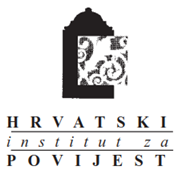ON NUTRITION, SUPPLY, HARVEST AND PURCHASE OF FOOD IN THE SECOND WORLD WAR: EXAMPLES FROM SLAVONIA AND SRIJEM
DOI:
https://doi.org/10.22586/review.v17i1.19691Keywords:
World War II, Slavonia and Srijem, food, supply, harvest, buyupAbstract
Due to the production of food and cattle fattening, the Slavonian and Srijem peasants were in the centre of interest of both the state authorities and the partisan movement during the Second World War. Both sides were very preoccupied with finding a way to win them over or force them to give the surplus to one or the other. Unwillingness to cooperate with the state authorities and partisans put the peasant’s both life and property in danger. Sowing, harvesting and other agricultural work were often only possible with an armed escort. The wheat harvests in the Slavonian and Srijem fields in 1942, 1943 and 1944 was followed by the destruction of crops, i.e. burning of wheat and the destruction of threshers. Despite such conditions, the local population managed to meet their needs, and therefore there was no famine. Due to the destruction of transport infrastructure and means of transport, in attacks by partisans and later by the Western Allies’ air force, it was difficult to transport the collected food. The population of Slavonian cities, especially workers and low-income civil servants, were in a difficult position due to irregular and scarce supplies in approvisations; and therefore, they were forced to purchase the basic foodstuffs on the “black market” at extremely high prices. The daily life became even more difficult in 1944 due to air strikes by the Western Allies and the Red Army air force. The paper gives a brief overview of these issue in the cities, mostly with examples from Brod na Savi / Slavonski Brod, and as for rural areas, mostly with examples from the mountain areas and to a lesser ex-tent from the plains, eastern Slavonia and Srijem.
Downloads
Published
How to Cite
Issue
Section
License
Copyright (c) 2021 Copyright holders are the publisher Croatian Institute of History and the authors.

This work is licensed under a Creative Commons Attribution-NonCommercial 4.0 International License.
The copyright holders are the Croatian Institute of History (as the publisher) and the authors.
The Review of Croatian History is an open-access journal. Its contents are freely accessible in their entirety. Users may read, download, copy, distribute, print, search, or put links to its material, and to change, reword, and process the material or use it in other legal ways, as long as they cite the original in the appropriate manner, in accordance with the Creative Commons licence CC BY-NC.
Works published in the Review of Croatian History may be deposited in institutional or thematic repositories, as long as the appropriate links to the web pages of the Journal and Hrčak (central portal of Croatian scientific journals) are made available.
The self-archiving policy is indexed in the Sherpa/RoMEO database, where it is visible that the journal allows the depositing of unreviewed (pre-print), reviewed (post-print), or publisher’s versions of the work.


